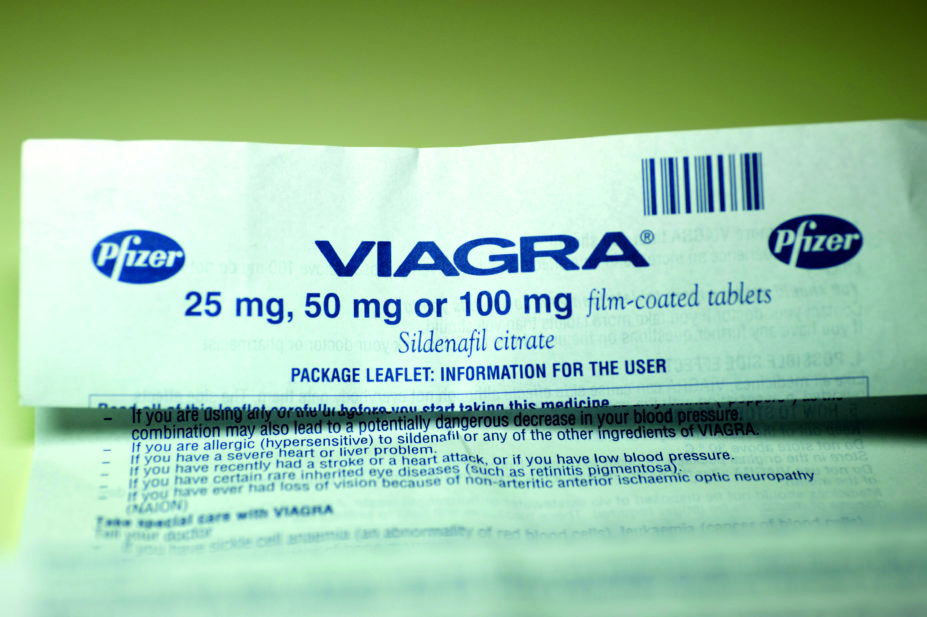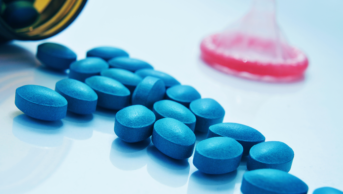
GeoPic / Alamy Stock Photo
Sildenafil — the prescription-only medicine branded as Viagra for the treatment of erectile dysfunction — could become a pharmacy (P) medicine if government proposals go ahead.
The UK’s Medicines and Healthcare products Regulatory Agency (MHRA), which regulates medicines and medical devices in the UK, is recommending that the drug — which was first made available in the UK in 1998 — should be reclassified as a P medicine.
The recommendation, which is now out for pubic consultation until 18 April 2017, follows a request from the drug’s manufacturer Pfizer that the product should be more easily accessible.
The MHRA proposes that 50mg sildenafil citrate tablets should be available in pharmacies for use by adult men with erectile dysfunction. The consultation document also says that the recommended maximum pack size is eight tablets and the drug should be taken as a maximum daily dose of 50mg.
It adds, however: “This proposal does not change any of the conditions of supply of the currently available prescription products for erectile dysfunction — which will remain available on prescription.”
Pfizer has produced a checklist for pharmacists to use when supplying the product, which includes the recommendation that it should not be sold to men with diagnosed cardiovascular conditions.
The consultation document says: “Pharmacy availability of sildenafil tablets would be of value to men who suffer from erectile dysfunction. Patients can be assessed for suitability by a pharmacist and made aware of the risks, situations where supply is not appropriate and potential interactions with other drugs.
“The risks of indirect danger arising from missed diagnosis of underlying disease is minimised through the pharmacist using their professional judgement and the checklist to identify patients for whom the product is not suitable, and referring these patients to a doctor,” it adds. “It is also considered that there is a low risk of direct danger and of intentional abuse that will lead to a danger to human health.”
The MHRA highlights the benefits that pharmacy supply of sildenafil would bring, which it says outweighs the risks involved, “bringing a hard to reach group into healthcare environment with the potential to increase earlier identification of heart disease and also reducing the risks associated with use of counterfeits obtained via the internet”.
Berkeley Phillips, medical director at Pfizer UK, says reclassifying the product as a P medicine “could offer men a new and additional way to access a legitimate, long established, and well-studied treatment for erectile dysfunction”.
“This could have further benefits as the condition may be an early warning sign of a more serious underlying condition, such as heart disease, which may otherwise go undetected,” he adds.
The company confirmed that if the proposal goes ahead the product will also still be available on prescription.
The Royal Pharmaceutical Society (RPS), the professional leadership body for pharmacists in Great Britain, supports the MHRA’s reclassification proposal. Martin Astbury, its president, says: “The potential switch… increases access to a medicine that has been proven to be safe and effective when used appropriately through over a decade of real-world use by millions of men.”
He adds that the move will help identify more men who may be at risk of cardiovascular disease whom pharmacists will be able to refer to GPs. “It will also help improve medicines safety as sildenafil is one of the most counterfeited medicines.”
If the product is reclassified, Astbury says the RPS will provide advice and guidance to pharmacists about the treatment of erectile dysfunction.


